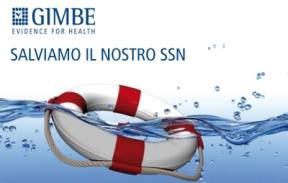Archivio > Vai alle uscite del 2003 > Vai aVolume 3, Numero 12 - Dicembre 2003
- La terapia inalatoria
Aerosolterapia delle basse vie aeree: i presupposti fisiopatologici Aerosoltherapy for the lower respiratory tract: the physiopathological assumptions

Riassunto. Si definisce aerosol “la dispersione fine in mezzo aeriforme (fase disperdente) di particelle solide o liquide (fase dispersa)”. Nel trattamento delle patologie respiratorie, la via inalatoria rappresenta la modalità più razionale per la somministrazione dei medicamenti, in quanto consente di far pervenire il farmaco direttamente nell’organo bersaglio, senza dover effettuare il passaggio nel torrente ematico, consentendo di raggiungere lo stesso effetto ad un dosaggio più basso di quello richiesto da una terapia orale o parenterale. Ne deriva che l’aerosol ideale è quello che permette di depositare la maggior parte del farmaco nel tratto delle vie respiratorie dove è richiesta la sua presenza e poco o nulla in altre sedi. Oggi sono disponibili due differenti metodiche di somministrazione: l’una genera particelle, partendo da una soluzione, che vengono aerosolizzate (tipicamente rappresentato dagli apparecchi che nebulizzano una soluzione con metodo meccanico o ultrasonico); l’altra diffonde particelle di dimensione pre-costituita (gli erogatori di polveri - MDI e PDI). La deposizione delle particelle di aerosol nelle vie aeree è, però, regolata da 3 principi di cinetica: impatto inerziale, impatto gravitazionale, diffusione. Essa dipende, inoltre, da: morfologia delle vie respiratorie, caratteristiche dei flussi aerei che veicolano le particelle e dalle particelle stesse. La terapia per via aerosolica appare oggi come il miglior approccio nella cura delle patologie delle basse vie respiratorie.
Summary. Aerosol is defined as the “fine dispersion of solid and liquid particles (dispersed phase) in a gaseous medium (dispersing phase)”. Among the treatments available for respiratory pathologies, inhalation represents the most rational way of administering drugs, as it allows the medication to directly reach the lungs without passing through the bloodstream, thus achieving the same effect at a lower dose than required by oral or parenteral therapy. The ideal aerosol deposits most of the medication in the lungs exactly where it is needed and little, or none, elsewhere. Today there are two different ways of administration: one is by means of mechanical or ultrasound devices, in which particles are generated from a solution; the other is by meter-dosed inhalers and dry powder inhalers which diffuse particles of predetermined size. The way particles deposit along the respiratory tract is determined by three cinetic principles: inertial impact, gravitational impact, and diffusion. It also depends on morphology of the respiratory tract, the characteristics of the airflow transporting the particles, and the particles themselves. Today, aerosol seams to be the best therapeutical approach available in the treatment of lower respiratory tract affections.






